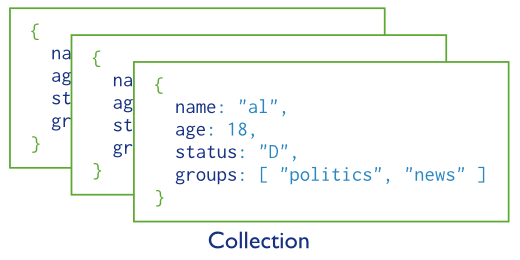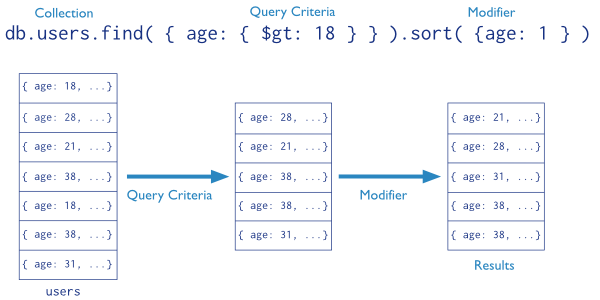- MongoDB CRUD Operations >
- MongoDB CRUD Introduction
MongoDB CRUD Introduction¶
On this page
MongoDB stores data in the form of documents, which are JSON-like field and value pairs. Documents are analogous to structures in programming languages that associate keys with values (e.g. dictionaries, hashes, maps, and associative arrays). Formally, MongoDB documents are BSON documents. BSON is a binary representation of JSON with additional type information. In the documents, the value of a field can be any of the BSON data types, including other documents, arrays, and arrays of documents. For more information, see Documents.

MongoDB stores all documents in collections. A collection is a group of related documents that have a set of shared common indexes. Collections are analogous to a table in relational databases.

Database Operations¶
Query¶
In MongoDB a query targets a specific collection of documents. Queries specify criteria, or conditions, that identify the documents that MongoDB returns to the clients. A query may include a projection that specifies the fields from the matching documents to return. You can optionally modify queries to impose limits, skips, and sort orders.
In the following diagram, the query process specifies a query criteria and a sort modifier:

See Read Operations Overview for more information.
Data Modification¶
Data modification refers to operations that create, update, or delete data. In MongoDB, these operations modify the data of a single collection. For the update and delete operations, you can specify the criteria to select the documents to update or remove.
In the following diagram, the insert operation adds a new document to the users collection.

See Write Operations Overview for more information.
Thank you for your feedback!
We're sorry! You can Report a Problem to help us improve this page.
